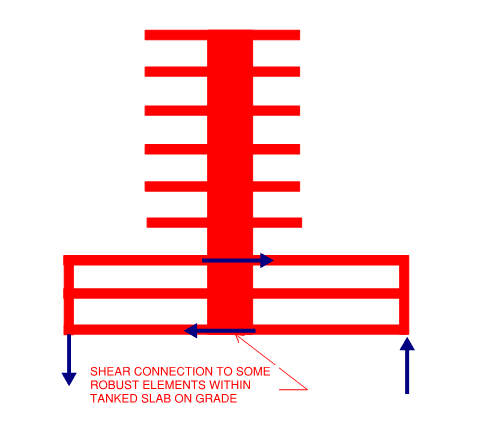There is this proyect on my office: a 6 story building with 2 basements and a high water table (about 20 ft of water pressure). We have enough dead loads to resist uplift from hydrostatic forces, but ASCE 7 guidelines says that we need to check both earthquake and soil pressure loads (E and H load cases are included on the same load combinations).
The problem is that there is just not enough weight on the building to prevent overturning from both earthquake and hydrostatic forces. I made a model on SAFE to check those foreces but it takes forever to run and it always have some sort of instability. I guess having so much uplift can do that to nonlinear models.
We have come up with the following ideas:
- Lower the foundation to add more weight to the building
- Account for friction between soil and basement walls
- Account on passive soil pressure from the walls
- Add some type of anchorage to take all the hydrostatic uplift
What do you usually do when you have a lot of upllift on your foundations?
The problem is that there is just not enough weight on the building to prevent overturning from both earthquake and hydrostatic forces. I made a model on SAFE to check those foreces but it takes forever to run and it always have some sort of instability. I guess having so much uplift can do that to nonlinear models.
We have come up with the following ideas:
- Lower the foundation to add more weight to the building
- Account for friction between soil and basement walls
- Account on passive soil pressure from the walls
- Add some type of anchorage to take all the hydrostatic uplift
What do you usually do when you have a lot of upllift on your foundations?

